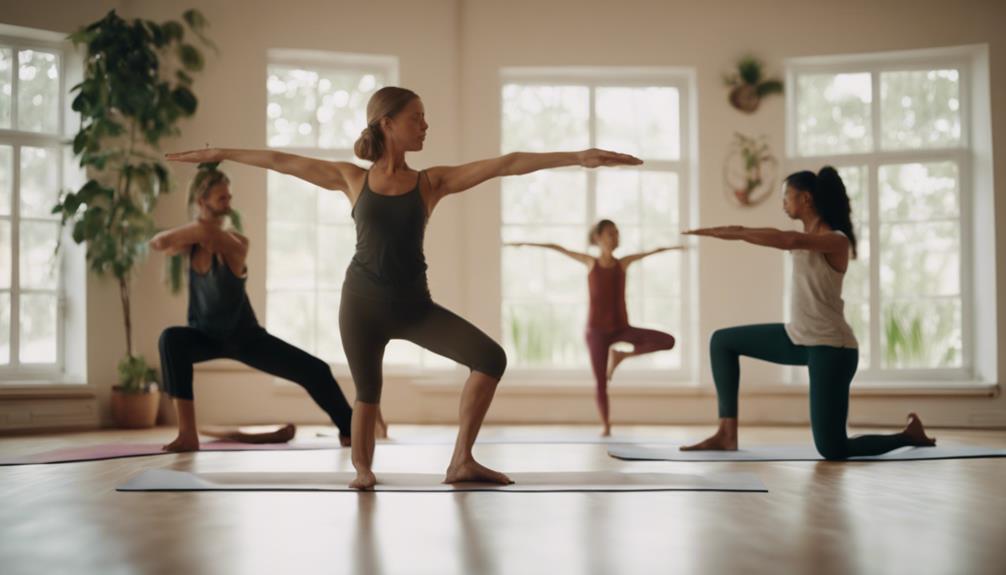What Are The Mudras In Yoga

Yoga is a holistic practice that integrates the body, mind, and spirit, and one of its most fascinating aspects is the use of mudras. These symbolic hand gestures play a significant role in enhancing the effectiveness of yoga and meditation. In this blog post, we will explore what mudras are, their significance in yoga, the various types of mudras, and how they can be incorporated into your practice to promote physical, emotional, and spiritual well-being.
Understanding Mudras: The Essence of Gesture
Mudras, derived from the Sanskrit word meaning “seal” or “gesture,” are symbolic hand positions used in yoga and meditation. They are believed to influence the flow of energy within the body and can enhance the practice of yoga by promoting concentration, calming the mind, and facilitating deeper meditation. Each mudra is associated with different elements and energies, making them powerful tools for achieving various physical and mental states. By consciously using mudras during yoga, practitioners can unlock the potential for personal transformation and spiritual growth.
The Historical Significance of Mudras in Yoga
The use of mudras in yoga dates back thousands of years, with roots in ancient Indian traditions. Historical texts like the *Hatha Yoga Pradipika* and *Yoga Sutras of Patanjali* mention mudras as essential components of yogic practice. Over time, these hand gestures have been incorporated into various forms of yoga, including Hatha, Kundalini, and Tantric yoga. Mudras were also used in Hindu and Buddhist rituals, symbolizing the connection between the physical and spiritual realms. Understanding the historical context of mudras enriches our appreciation for their significance in contemporary yoga practice.
Types of Mudras: Exploring the Diversity
There are numerous types of mudras, each serving different purposes and effects. Broadly, mudras can be categorized into three main types: Hasta Mudras (hand gestures), Kaya Mudras (body gestures), and Maha Mudras (great gestures). Hasta Mudras, the most common, involve various finger positions and are often used during meditation and pranayama (breath control). Kaya Mudras include whole-body postures that may involve alignment and positioning of the body. Maha Mudras combine elements of both hand and body gestures to create a more profound impact on the practitioner’s energy flow. Knowing the different types of mudras allows practitioners to choose the ones that resonate with their goals and intentions.
The Benefits of Practicing Mudras in Yoga
Incorporating mudras into your yoga practice can yield numerous benefits. Physically, they can help improve circulation, enhance flexibility, and foster relaxation. Emotionally, mudras can be instrumental in managing stress, anxiety, and depression by promoting a sense of peace and balance. Spiritually, they aid in deepening meditation and creating a more profound connection with oneself. Additionally, mudras are believed to stimulate specific energy points in the body, similar to acupuncture, leading to improved overall health. By understanding these benefits, practitioners can be motivated to include mudras as an integral part of their yoga routine.
Popular Mudras and Their Purposes
Several mudras are commonly practiced in yoga, each with its unique purpose and benefits. The Gyan Mudra, formed by touching the index finger and thumb together, is known for enhancing concentration and knowledge. The Chin Mudra, where the thumb and index finger touch while the other fingers are extended, promotes calmness and meditation. The Anjali Mudra, or prayer gesture, fosters gratitude and connection, making it ideal for beginning or ending a yoga session. Other notable mudras include the Apan Vayu Mudra, which is said to support heart health, and the Shunya Mudra, believed to alleviate ear-related issues. Understanding these popular mudras empowers practitioners to harness their specific benefits during practice.
How to Incorporate Mudras into Your Yoga Practice
Incorporating mudras into your yoga practice is simple and can greatly enhance your experience. Start by selecting a mudra that resonates with your intention for the practice. You can hold the chosen mudra during meditation, while performing asanas, or even during pranayama exercises. As you practice, pay attention to the sensations and emotions that arise. It may be helpful to set an intention or mantra to accompany the mudra, deepening the connection between your mind and body. Over time, you may find that certain mudras become a natural part of your yoga routine, enhancing your overall practice and mindfulness.
Mindfulness and Mudras: Creating a Deeper Connection
The practice of mudras is closely tied to mindfulness and intention-setting. When performing a mudra, it’s essential to stay present and aware of your breath and feelings. This mindfulness can amplify the benefits of the mudra, enhancing its effectiveness. Take a moment to center yourself before beginning, focusing on your breath and allowing any distractions to fade away. As you hold the mudra, visualize the energy flowing through your body, promoting healing and balance. This deeper connection not only enriches your yoga practice but also fosters a greater sense of awareness in your daily life.
Conclusion: Embrace the Power of Mudras in Yoga
In conclusion, mudras are powerful tools that can significantly enhance your yoga practice, providing physical, emotional, and spiritual benefits. By understanding what mudras are, their historical significance, and how to incorporate them into your practice, you can unlock their transformative potential. Whether you’re a seasoned yogi or just starting your journey, embracing the power of mudras can lead to a deeper connection with yourself and a more enriching experience in your yoga practice. So, the next time you roll out your mat, consider adding a mudra to your routine and discover the profound effects it can have on your mind, body, and spirit.Gaia Yoga